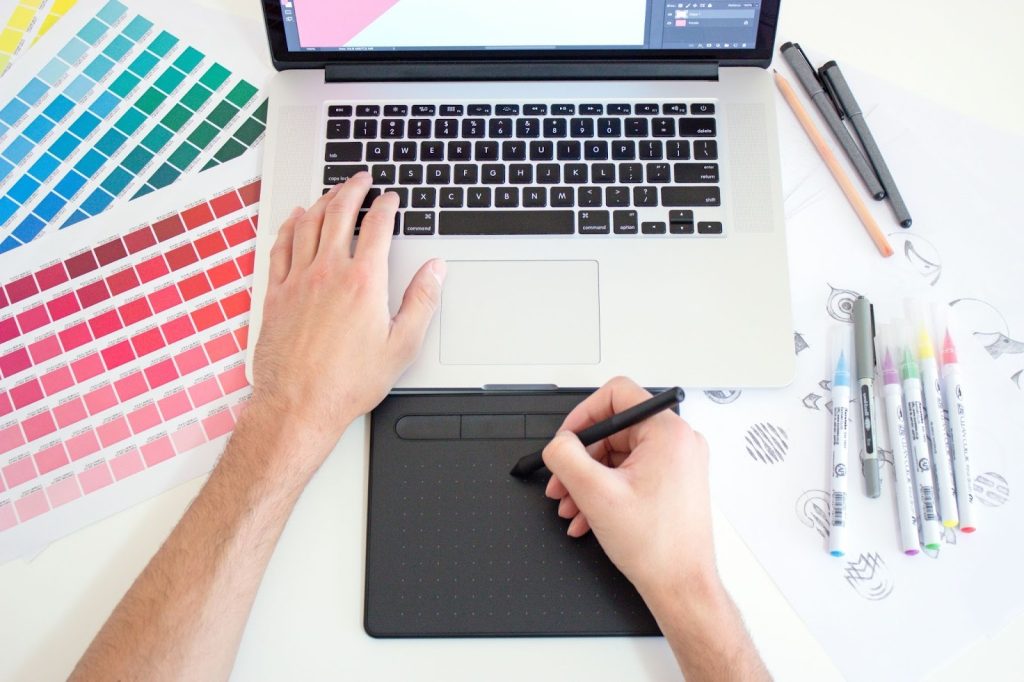General
Visual Consistency in Branding: The Hidden Power That Builds Trust

Learn how visual consistency in branding builds subconscious trust, drives brand recognition, and strengthens customer loyalty through cohesive design psychology.

Have you ever scrolled past an ad and immediately recognized the brand without even seeing its logo?
That’s the silent magic of Visual Consistency in Branding.
In today’s fast-paced digital world, audiences make split-second judgments based on what they see, not just what they read. Visual Consistency in Branding ensures that every design element from color to typography speaks the same language across every platform. It’s how brands like Apple or Coca-Cola create instant recognition and credibility through design alone.
According to a Lucidpress study, companies that maintain consistent branding can increase their revenue by up to 33%, proving that design consistency directly impacts business performance.But here’s the real secret: how visual consistency builds brand trust subconsciously.
When people repeatedly see the same visuals, the same tone, palette, and aesthetic harmony their brains associate that repetition with reliability. Even without realizing it, they begin to trust the brand more deeply.
That’s why Visual Consistency in Branding isn’t just a design decision it’s a psychological strategy. By understanding how visual consistency builds brand trust subconsciously, brands can create emotional safety, familiarity, and loyalty that competitors can’t easily copy.
1. What Is Visual Consistency in Branding?
Visual consistency means keeping all your brand’s visual elements like logo, color palette, typography, imagery, and layout uniform across every platform.
Whether it’s your Instagram feed, website, packaging, or email signature, each touchpoint should feel like part of the same visual family.
When design elements repeat consistently, they create predictability and predictability feels safe to the human brain.
2. The Psychology: Why Consistency Builds Subconscious Trust
At its core, Visual Consistency in Branding taps into human psychology. Our brains love patterns. We instinctively feel safer around what feels familiar and predictable. That’s exactly how visual consistency builds brand trust subconsciously.
When customers encounter the same color tones, logo styles, or visual rhythm across your brand’s website, social media, and packaging, they begin to form a mental shortcut: “I know this brand, I can trust it.”
Psychologists call this the mere exposure effect, which explains why familiarity increases liking and confidence. The more people see your visuals repeated with clarity, the stronger that subconscious bond becomes.A compilation by Marketing LTB revealed that using a consistent signature colour can boost brand recognition by up to 80%, reinforcing how even small design details shape perception.
This is why Visual Consistency in Branding isn’t just a creative guideline, it’s a trust-building mechanism. Every repeated pattern, every consistent layout is quietly teaching your audience how visual consistency builds brand trust subconsciously, one glance at a time.
3. The Hidden Cost of Visual Inconsistency
While visual consistency in branding might sound like a design detail, it’s actually a core trust builder. When brands fail to maintain it, they silently weaken their identity and credibility.Here’s how inconsistency can hurt your brand:
1. Confuses Your Audience
When your website, Instagram, and ads all look different, people can’t instantly recognize your brand. Confusion kills connection and that’s the opposite of what strong branding should do.
2. Weakens Brand Recall
A lack of visual consistency in branding interrupts the brain’s pattern recognition. Instead of remembering you, audiences struggle to identify who you are across platforms.
3. Reduces Perceived Professionalism
Even if viewers can’t articulate why something feels “off,” inconsistent visuals make a brand seem less credible. Consistency, on the other hand, subconsciously signals structure, care, and reliability.
4. Hurts Conversion Rates
When users click an ad and land on a page that looks completely different, they experience doubt. This breaks the psychological link that shows how visual consistency builds brand trust subconsciously and doubt lowers conversions.
5. Increases Marketing Costs
Without a unified design system, teams recreate assets from scratch, wasting both time and budget. Visual consistency streamlines creation, speeds up campaigns, and boosts long-term ROI.
Real-World Examples of Visual Consistency Done Right
Many successful brands study how visual consistency builds brand trust subconsciously to shape experiences that feel familiar, credible, and emotionally reassuring at every customer touchpoint. They understand that design isn’t decoration, it’s communication.
Let’s look at how some global leaders use visual consistency in branding as their silent trust builder:
1. Apple: Simplicity That Speaks Luxury
Apple’s visual world is built on clean white spaces, precision layouts, and minimalist typography. Every ad, store, product box, and website page shares the same calm, futuristic tone. This visual harmony creates predictability and predictability feels safe.
Even without reading a single line of text, people can identify an Apple product instantly. That’s the subconscious result of repetition and refinement. Apple’s consistency tells your brain, “If it looks this polished, it must be trustworthy.”
2. Starbucks: Comfort in Familiar Green
Starbucks uses visual consistency not just to sell coffee, but to create a feeling of belonging. Its signature green, circular logo, and warm, earthy interiors appear across every outlet and platform worldwide. The result? Emotional familiarity.Customers walking into a Starbucks anywhere in the world subconsciously feel “at home.” That’s how visual consistency in branding works by building emotional anchors through repeated design cues.
3. Spotify: Energy That Feels Alive
Spotify’s use of vibrant gradients, expressive photography, and dynamic layouts reflects its youthful, ever-evolving identity. Every playlist cover, banner, and campaign carries the same bold, creative rhythm. By maintaining this energy consistently, Spotify signals innovation without chaos showing how visual consistency builds brand trust subconsciously even in fast-moving creative industries.
4.H&M: Consistency That Democratizes Fashion
H&M, on the other hand, uses consistency to create accessibility. Its red-and-white logo, modern typography, and bright, inclusive imagery appear uniformly across stores, digital ads, and campaigns worldwide. This visual predictability makes H&M feel approachable and dependable customers know what to expect, whether online or in-store. That’s the psychological power of visual consistency in branding; it creates emotional safety through familiarity while reinforcing brand values like inclusivity and affordability.
5. Tips to Build Visual Consistency in Your Brand
Learning how visual consistency in Branding builds brand trust subconsciously can help creative teams align their design, marketing, and communication efforts around one emotional narrative.
a. Create a Brand Style Guide:Document your colors, logo usage, typography, imagery style, and spacing rules. Tools like Frontify or Canva Brand Kit make this easy.
b. Use Templates:For social posts, decks, and presentations so every visual feels cohesive.
c. Train Your Team: Ensure everyone creating visual assets (designers, marketers, interns) understands and follows the guide.
d. Audit Regularly: Review all your brand touchpoints quarterly to spot visual drift early.

Conclusion: Design Familiarity = Emotional Safety
In branding, visual consistency in branding isn’t just about keeping things “on-brand” it’s about creating emotional stability for your audience. Every time someone encounters your logo, colors, or typography in a familiar way, their brain experiences a subtle sense of safety. This comfort fuels connection, which ultimately builds loyalty.
Think about it: when a brand looks the same everywhere from its Instagram grid to its product packaging it signals reliability. People subconsciously think, “If they’re this consistent visually, they’re probably consistent in quality too.” That’s how trust begins not through slogans, but through repetition and reliability.
How visual consistency builds brand trust subconsciously lies in this simple psychological truth: our brains love patterns. The more consistent your visual identity is, the faster people recognize and remember you and the more trustworthy you feel without saying a word.
In the end, visual consistency in branding isn’t only good design, it’s good psychology. And in a marketplace full of noise, that subconscious trust becomes your loudest message.To truly connect with audiences, brands must look deeper into how visual consistency builds brand trust subconsciously and use that insight to create emotionally consistent experiences.
Ready to make your brand look as trustworthy as it feels?
Partner with Leo9 Studio to build a visually consistent identity that drives recognition and trust.
FAQ’s
1. Why is visual consistency in branding so important?
Visual consistency in branding helps audiences instantly recognize and trust your brand. When all design elements from colors to typography remain uniform, it creates familiarity and emotional stability, leading to stronger customer relationships and higher recall.
2. How does visual consistency build brand trust subconsciously?
Through repetition and predictability. When people repeatedly see the same visuals and design patterns, their brains associate that familiarity with reliability. This is how visual consistency builds brand trust subconsciously, forming a sense of comfort and credibility over time.
3. What are some common mistakes brands make with visual consistency?
Many brands overlook having a unified style guide, reuse outdated assets, or change visual elements too often across campaigns. These inconsistencies weaken recognition and trust something a well-structured design system from Leo9 Studio can help fix.
4. How can Leo9 Studio help my brand achieve visual consistency?
At Leo9 Studio, we create cohesive brand systems that connect design, strategy, and psychology. Our experts help define your brand palette, type hierarchy, and design tone so every customer touchpoint looks, feels, and performs consistently online and offline to achieve visual consistency in branding.
5. What tools or processes does Leo9 Studio use for maintaining consistency?
We use various tools like Figma, Frontify, and Adobe Creative Cloud to build brand kits, visual libraries, and templates. Combined with our in-house design framework, Leo9 ensures your brand visuals remain consistent across marketing, web, and social platforms.
5.How can I get in touch with Leo9 to discuss my rebranding needs?
You can reach out to Leo9 through their official website. There, you will find contact information, including a contact form, email address, and phone number for direct inquiries.
6.What industries does Leo9 have experience working with?
Leo9 has worked with a diverse range of industries, including e-commerce, healthcare, education, and finance, adapting its expertise to meet the specific demands of various sector





